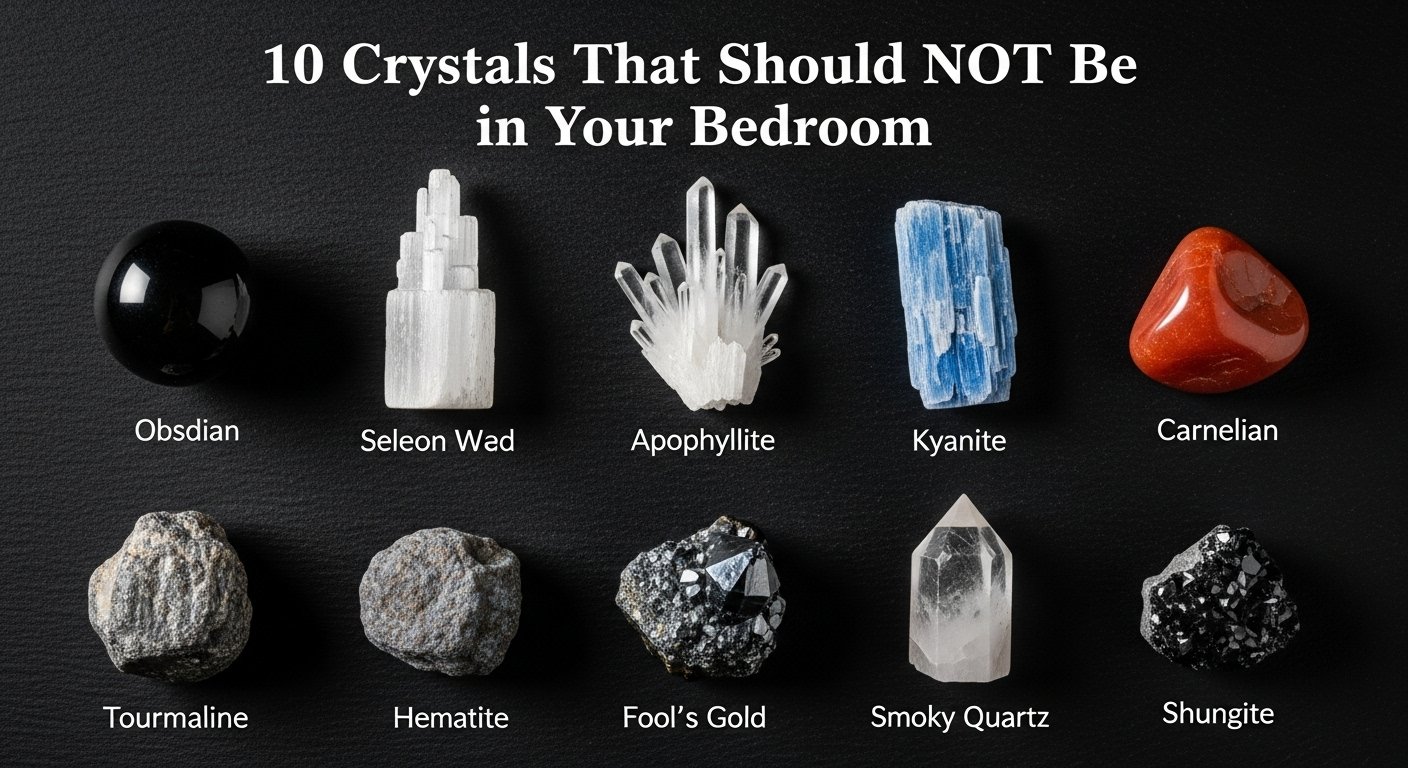Creating a peaceful bedroom sanctuary goes beyond choosing the right mattress or blackout curtains. For crystal enthusiasts, the stones you place in your sleeping space can significantly impact your rest, dreams, and overall energy balance. While many crystals promote tranquility and better sleep, others can be too stimulating or disruptive for your bedroom environment.
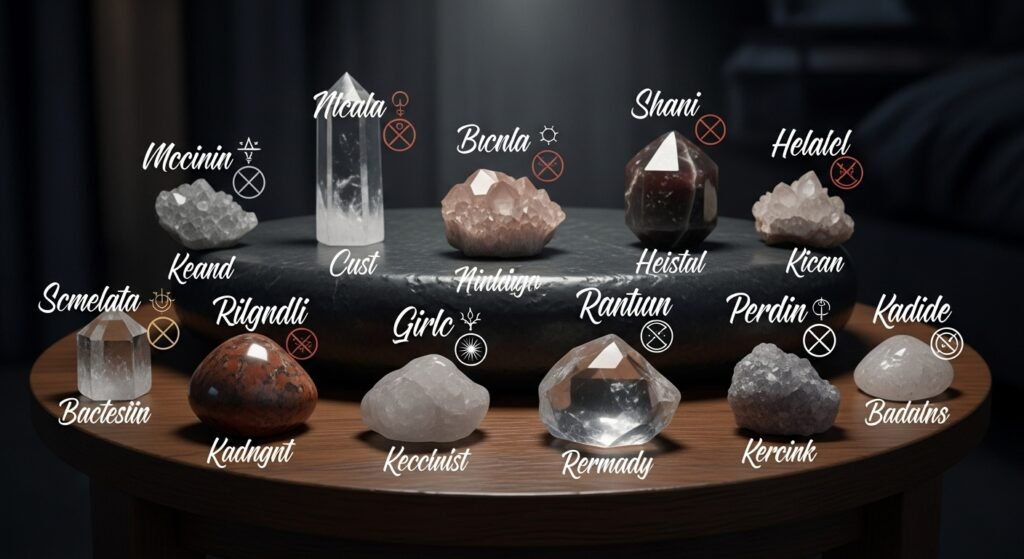
Understanding which crystals to avoid in your bedroom is crucial for maintaining healthy sleep patterns and creating a harmonious space for rest and rejuvenation. This comprehensive guide explores ten crystals that should stay out of your sleeping quarters, plus expert tips for choosing bedroom-appropriate alternatives.
Why Crystal Placement Matters in Your Bedroom
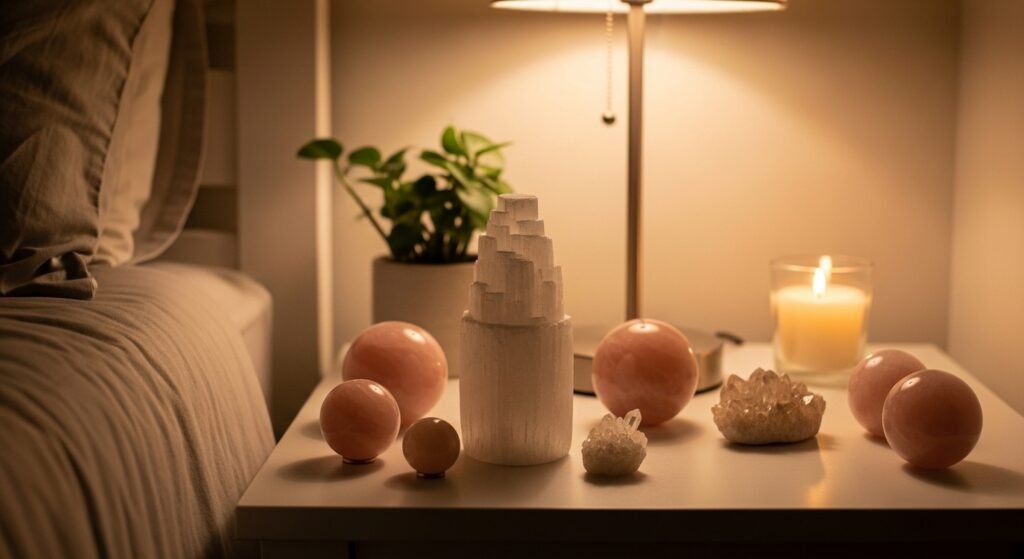
Your bedroom serves as your personal retreat—a space for rest, intimacy, and subconscious processing through dreams. The energy of crystals can profoundly influence this environment, either supporting peaceful sleep or creating overstimulation that disrupts your natural rhythms.
Crystals work by emitting specific vibrational frequencies that interact with your body’s energy field. While some stones promote calm and grounding, others generate intense, activating energies that can interfere with sleep. High-energy crystals might cause:
- Difficulty falling asleep
- Restless nights and frequent waking
- Vivid or disturbing dreams
- Increased anxiety or mental chatter
- Physical restlessness
The ancient practice of feng shui emphasizes creating balanced energy flow in living spaces. When it comes to bedroom feng shui crystals, the goal is cultivating yin energy—soft, receptive, and nurturing—rather than yang energy, which is active and stimulating.
The 10 Crystals to Avoid in Your Bedroom
1. Clear Quartz
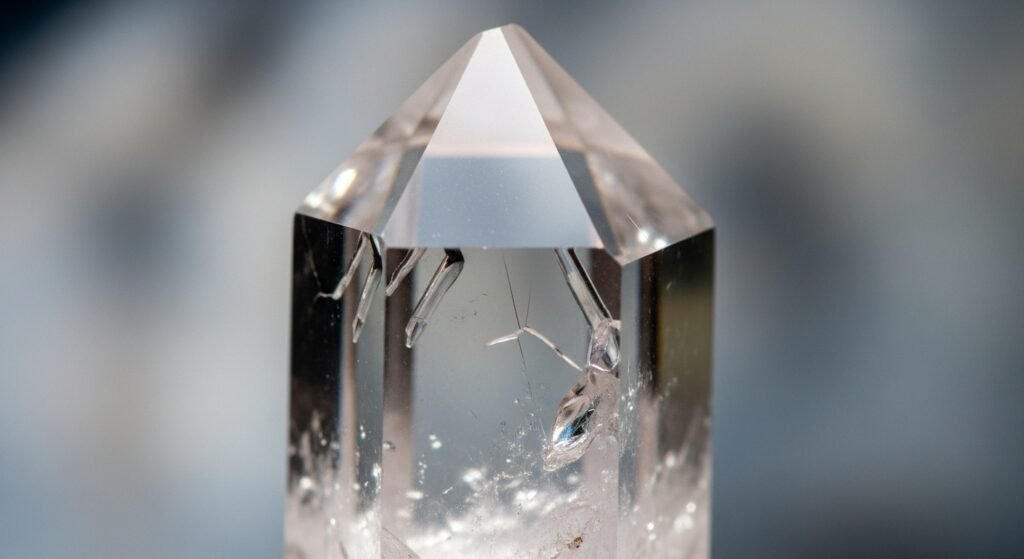
Despite being known as the “master healer,” clear quartz is one of the most problematic crystals for bedroom use. This powerful amplifier crystal enhances and magnifies all surrounding energies, including electromagnetic frequencies from electronic devices.
Why it’s unsuitable for bedrooms:
- Amplifies ambient energy, potentially creating overstimulation
- Can intensify electromagnetic field (EMF) interference
- May cause mental hyperactivity and racing thoughts
- Too energetically “loud” for restful sleep
Clear quartz works best in living areas, offices, or meditation spaces where its amplifying properties support focus and clarity. If you love this crystal’s energy, consider placing it in your bathroom or hallway instead.
2. Carnelian
This vibrant orange stone pulses with dynamic, creative energy that’s perfect for motivation and courage—but terrible for sleep. Carnelian stimulates the sacral chakra, boosting passion, creativity, and physical vitality.
Why carnelian disrupts sleep:
- Increases physical and sexual energy
- Stimulates creative thinking and mental activity
- Can cause restlessness and difficulty winding down
- Associated with action and movement rather than rest
Carnelian belongs in creative spaces, home offices, or workout areas where its energizing properties can be fully utilized without interfering with sleep cycles.
3. Citrine
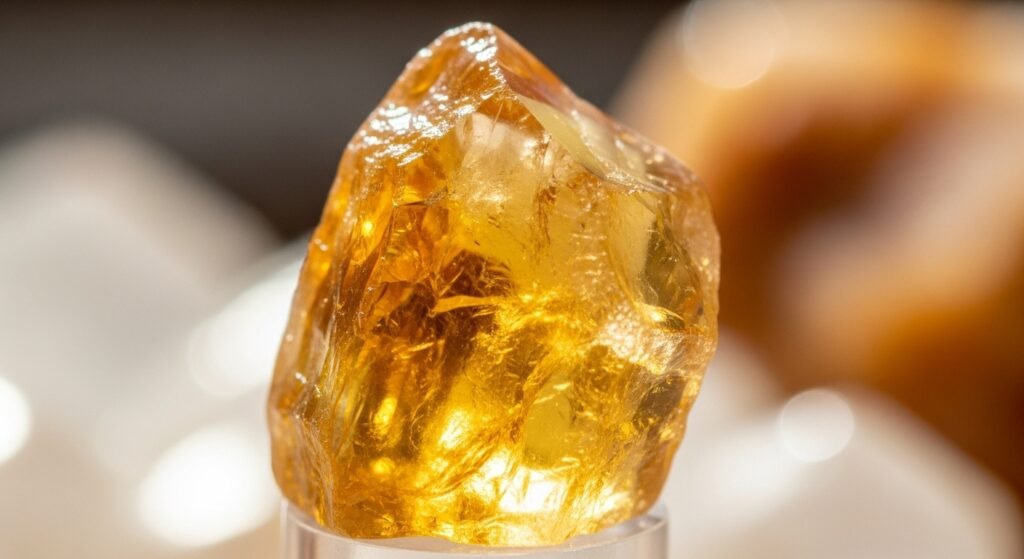
Known as the “success stone,” citrine radiates sunny, optimistic energy that promotes abundance and mental clarity. However, this same uplifting vibration can be counterproductive in sleep environments.
Sleep disruption factors:
- Highly energizing and mentally stimulating
- Can cause anxiety in sensitive individuals
- Associated with solar plexus chakra activation
- May trigger vivid dreams or nightmares
Place citrine in your office, kitchen, or living room where its prosperity-attracting energy can work without disturbing your rest. Many crystal practitioners recommend removing citrine from bedrooms entirely.
4. Hematite
This metallic, grounding stone might seem like a good bedroom choice due to its stabilizing properties. However, hematite’s strong electromagnetic properties and dense energy can create an uncomfortable sleeping environment.
Bedroom concerns with hematite:
- Dense, heavy energy that can feel oppressive
- Strong electromagnetic field that may interfere with sleep
- Can cause headaches in sensitive individuals
- May create feelings of being “weighed down”
Hematite works better in living areas or offices where its grounding properties support focus and stability without overwhelming your sleep space.
5. Malachite
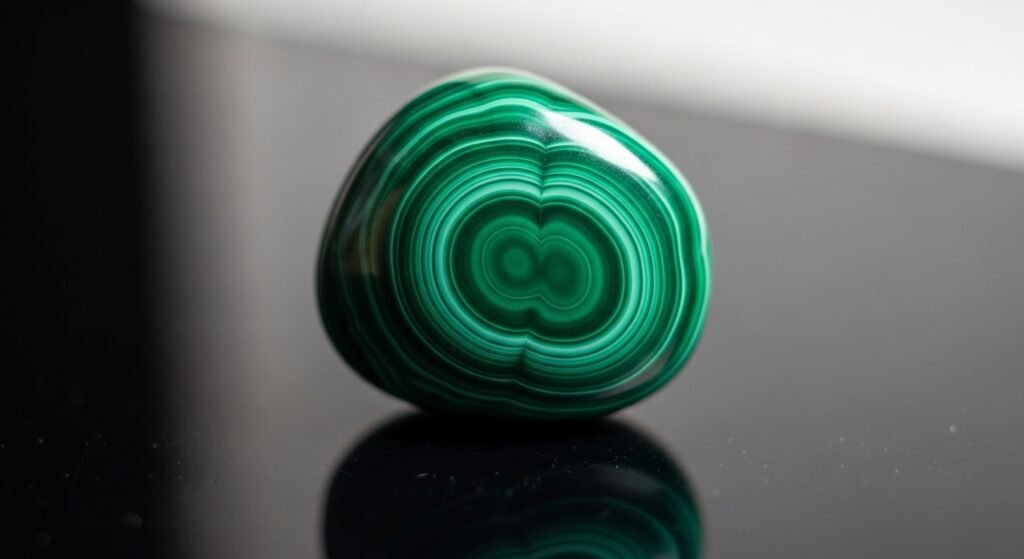
This stunning green stone is powerful for transformation and emotional healing, but its intense energy makes it unsuitable for peaceful sleep environments. Malachite works by bringing suppressed emotions and traumas to the surface for healing.
Why malachite disturbs bedroom energy:
- Brings up deep emotional issues during vulnerable sleep times
- Can trigger intense or disturbing dreams
- Associated with major life changes and upheaval
- Too emotionally stimulating for rest and recovery
Reserve malachite for conscious healing work in meditation spaces or therapy rooms, away from areas designated for rest and rejuvenation.
6. Moldavite
This rare green tektite (formed from meteorite impact) carries incredibly high-frequency energy that can be overwhelming even during waking hours. Moldavite accelerates spiritual growth and transformation at an intense pace.
Sleep interference issues:
- Extremely high vibrational frequency
- Can cause sleep disturbances and night terrors
- May trigger overwhelming psychic experiences
- Associated with rapid, sometimes uncomfortable change
Moldavite requires careful handling and should never be placed in bedrooms. Even experienced crystal workers often find this stone too intense for prolonged exposure.
7. Turquoise
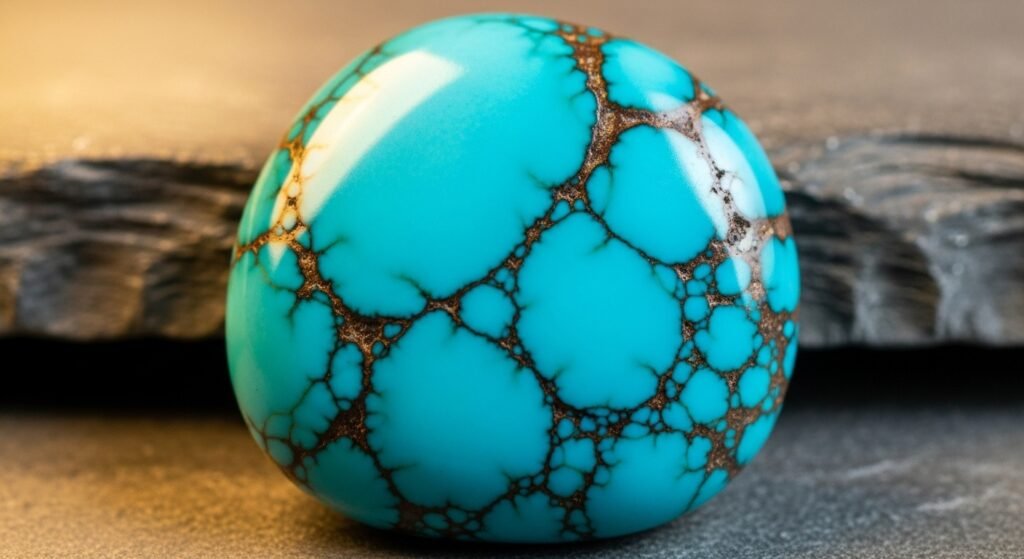
While turquoise is generally calming, its strong connection to communication and the throat chakra can stimulate mental chatter and dream activity that interferes with restful sleep.
Bedroom placement concerns:
- Stimulates communication and self-expression
- Can increase dream activity and recall
- May cause throat chakra overactivity during sleep
- Associated with mental clarity that can prevent mental quieting
Turquoise works wonderfully in creative spaces, offices, or communication areas where its expressive energy supports clear thinking and honest communication.
8. Fluorite
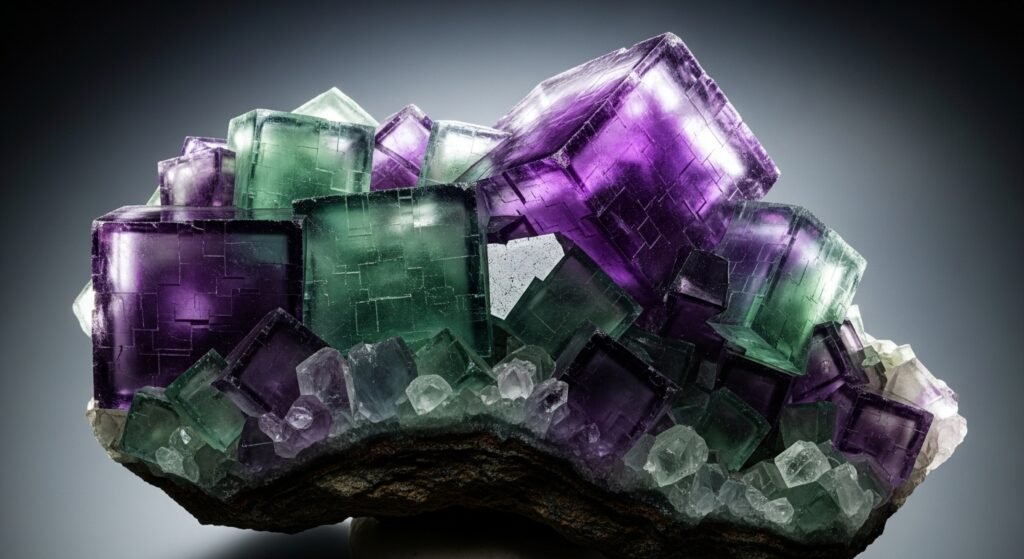
Rainbow fluorite and other fluorite varieties are excellent for mental clarity and focus, but these same properties make them poor choices for bedroom environments where mental quieting is essential.
Why fluorite disrupts sleep:
- Enhances mental activity and logical thinking
- Can cause analytical mind to remain active
- Associated with learning and intellectual pursuits
- May prevent the mental “shutdown” needed for sleep
Place fluorite in study areas, offices, or libraries where its mental enhancement properties support learning and concentration without interfering with rest.
9. Tiger’s Eye
This golden-brown stone promotes confidence, courage, and personal power—qualities that generate active, yang energy incompatible with the receptive yin energy needed for sleep.
Sleep disruption factors:
- Stimulates personal power and assertiveness
- Can cause restlessness and inability to surrender to sleep
- Associated with taking action rather than resting
- May increase anxiety in some individuals
Tiger’s eye belongs in professional settings, workout areas, or anywhere you need confidence and courage, but not in spaces designated for rest and vulnerability.
10. Obsidian
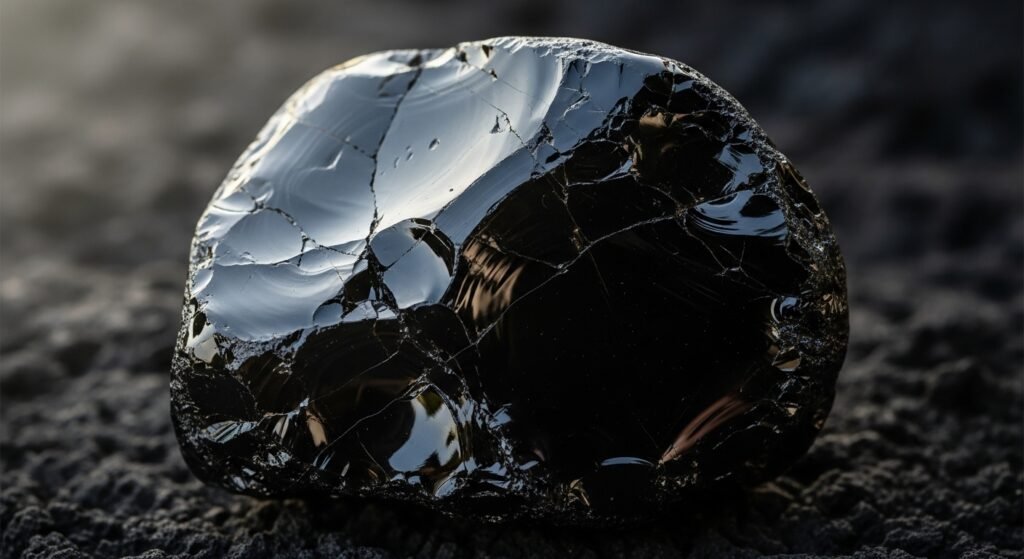
Black obsidian is a powerful protective stone that absorbs negative energy, but it can also bring suppressed emotions and shadow aspects to the surface. This intense emotional processing makes it unsuitable for peaceful sleep.
Bedroom concerns:
- Brings up shadow aspects and suppressed emotions
- Can trigger intense or frightening dreams
- May create emotional overwhelm during vulnerable sleep states
- Associated with deep psychological work
Use obsidian for conscious shadow work and protection in meditation spaces or therapy areas, but avoid placing it near your bed or in sleeping areas.
Understanding Crystal Energy and Sleep Cycles
Your sleep cycle involves distinct phases, from light sleep to deep REM sleep, each serving important physiological and psychological functions. Stimulating crystals can interfere with these natural rhythms by:
Disrupting Melatonin Production: High-energy crystals may interfere with your body’s natural melatonin production, the hormone responsible for sleepiness and circadian rhythm regulation.
Overstimulating the Nervous System: Activating crystals can keep your sympathetic nervous system engaged, preventing the parasympathetic “rest and digest” mode needed for quality sleep.
Affecting Brainwave Patterns: Different crystals resonate with various brainwave frequencies. Sleep requires progression from beta waves (alert consciousness) through alpha and theta waves to delta waves (deep sleep).
Electromagnetic Sensitivity: Many people are sensitive to electromagnetic fields, and certain crystals with strong EMF properties can create discomfort or restlessness.
Creating the Perfect Crystal-Enhanced Bedroom
While avoiding overstimulating crystals, you can still harness crystal energy to enhance your sleep environment. Focus on stones that promote:
- Calm, peaceful energy
- Emotional balance
- Physical relaxation
- Protection from negative influences
- Enhanced dream recall (if desired)
Bedroom-Friendly Crystal Alternatives
Amethyst: This purple quartz variety promotes relaxation, spiritual connection, and peaceful sleep. Place it on your nightstand or under your pillow for gentle, calming energy.
Rose Quartz: Known as the love stone, rose quartz emanates soft, nurturing energy that promotes self-love, emotional healing, and peaceful relationships.
Moonstone: Perfect for bedroom use, moonstone connects with lunar energy, feminine intuition, and natural sleep cycles. It’s particularly beneficial for women’s health and hormonal balance.
Lepidolite: This lilac-colored stone contains natural lithium, making it incredibly calming for anxiety, stress, and sleep disorders.
Howlite: A white stone that promotes patience, calm communication, and peaceful sleep. It’s particularly helpful for those who struggle with mental chatter at bedtime.
Feng Shui Principles for Bedroom Crystal Placement
Traditional feng shui offers valuable guidance for creating harmonious bedroom energy with crystals:
Placement Guidelines
Bedside Tables: Choose one calming crystal for each nightstand to maintain balance. Avoid clustering multiple stones together.
Under the Bed: Place grounding stones like smoky quartz under the bed center for stability and protection, but avoid stimulating crystals in this position.
Window Areas: Position protective stones near windows to filter incoming energy, but ensure they don’t reflect light that could disturb sleep.
Dresser or Vanity: Display beautiful, calming crystals on bedroom furniture to enhance the room’s aesthetic while maintaining peaceful energy.
Color Considerations in Crystal Selection
Color psychology plays a crucial role in bedroom crystal selection:
Cool Colors (Blue, Purple, Green): Generally more suitable for bedroom environments as they promote calm, healing, and relaxation.
Warm Colors (Red, Orange, Yellow): Typically too stimulating for sleep spaces, though pale versions might be acceptable in small quantities.
Neutral Colors (White, Black, Gray): Can work well when the crystal’s energy matches the calm needed for sleep.
Signs Your Bedroom Crystals Are Affecting Your Sleep
Pay attention to these warning signs that your crystal collection might be disrupting your rest:
Physical Symptoms
- Difficulty falling asleep or staying asleep
- Headaches upon waking
- Feeling tired despite adequate sleep hours
- Restless leg syndrome or physical agitation
- Temperature sensitivity or feeling too warm
Emotional and Mental Signs
- Increased anxiety or worry at bedtime
- Racing thoughts or mental hyperactivity
- Unusual emotional sensitivity
- Feeling “wired” despite physical fatigue
- Mood changes or irritability
Sleep Pattern Changes
- More frequent wake-ups during the night
- Earlier than usual wake times
- Changes in dream patterns or intensity
- Sleep talking or movement
- Difficulty reaching deep sleep stages
If you notice these symptoms after introducing new crystals to your bedroom, consider relocating them to other areas of your home.
Expert Tips for Choosing Bedroom Crystals
Energy Assessment
Before placing any crystal in your bedroom, spend time with it during waking hours:
- Hold the crystal for 10-15 minutes while relaxing
- Notice physical sensations – does it make you feel energized or calm?
- Observe mental effects – does your mind become more active or peaceful?
- Trust your intuition – your body’s response is the best guide
Size and Quantity Considerations
Smaller is Better: Large crystals emit stronger energy fields that may be overwhelming in sleep spaces. Choose smaller specimens for bedroom use.
Less is More: Limit bedroom crystals to 2-3 carefully chosen stones rather than creating a large collection that could generate energetic chaos.
Quality over Quantity: Invest in high-quality, genuine crystals rather than numerous lower-grade specimens.
Cleansing and Maintenance
Bedroom crystals require regular energetic cleansing to maintain their beneficial properties:
Monthly Cleansing: Use methods like moonlight, sage, or sound cleansing to clear accumulated energy.
Intention Setting: Regularly reaffirm your intention for peaceful sleep when working with bedroom crystals.
Rotation System: Consider rotating crystals seasonally to prevent energetic stagnation.
Conclusion: Creating Your Perfect Sleep Sanctuary
Your bedroom should be a haven of peace, rest, and rejuvenation. While crystals can enhance this sanctuary, choosing the right stones is crucial for maintaining healthy sleep patterns and overall well-being.
Avoid the ten crystals discussed in this guide—clear quartz, carnelian, citrine, hematite, malachite, moldavite, turquoise, fluorite, tiger’s eye, and obsidian—in your bedroom space. Instead, opt for gentle, calming stones like amethyst, rose quartz, moonstone, lepidolite, and howlite that support natural sleep cycles and peaceful rest.
Remember that crystal work is highly personal. What disrupts one person’s sleep might not affect another. Trust your intuition, pay attention to your body’s responses, and don’t hesitate to relocate crystals if they’re interfering with your rest.
By thoughtfully curating your bedroom crystal collection and following feng shui principles for placement, you can create a harmonious space that supports both your spiritual practice and your need for restorative sleep. Sweet dreams await in your perfectly balanced crystal sanctuary.
FAQs About Crystals in the Bedroom
1. Which crystals should I avoid keeping in my bedroom?
You should avoid high-energy crystals such as Clear Quartz, Tiger’s Eye, or Moldavite in the bedroom, as they can overstimulate your mind and disrupt your sleep patterns.
2. Can I keep Amethyst in my bedroom?
Yes, Amethyst is often considered a calming stone that promotes relaxation and good dreams, making it an excellent choice for a bedroom.
3. Where should I place crystals in my bedroom for feng shui?
For feng shui alignment, place calming crystals like Rose Quartz or Selenite on your nightstand, under your pillow, or in the corners of your room to balance the energy effectively.
4. How can crystals help with better sleep?
Crystals like Lepidolite and Selenite emit soothing vibrations that help reduce stress, calm the mind, and create a tranquil atmosphere conducive to restful sleep.
5. Do I need to cleanse my bedroom crystals regularly?
Yes, cleansing your bedroom crystals is essential to maintain their energy. You can cleanse them with moonlight, sage, or sound to ensure they remain effective and energetically aligned.
